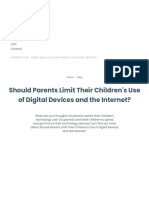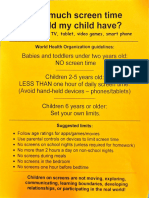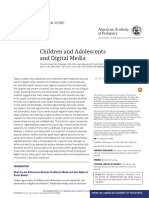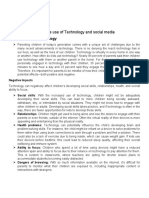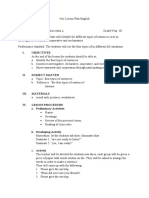0% found this document useful (0 votes)
37 views2 pagesScreen Time Guidelines
The document discusses screen time guidelines for social media use. It explains that specific time limits are not recommended and that the quality of interactions is more important than quantity of use. It provides resources for parents and educators on supporting healthy media habits and digital citizenship.
Uploaded by
Joana MauricioCopyright
© © All Rights Reserved
We take content rights seriously. If you suspect this is your content, claim it here.
Available Formats
Download as PDF, TXT or read online on Scribd
0% found this document useful (0 votes)
37 views2 pagesScreen Time Guidelines
The document discusses screen time guidelines for social media use. It explains that specific time limits are not recommended and that the quality of interactions is more important than quantity of use. It provides resources for parents and educators on supporting healthy media habits and digital citizenship.
Uploaded by
Joana MauricioCopyright
© © All Rights Reserved
We take content rights seriously. If you suspect this is your content, claim it here.
Available Formats
Download as PDF, TXT or read online on Scribd
/ 2



















